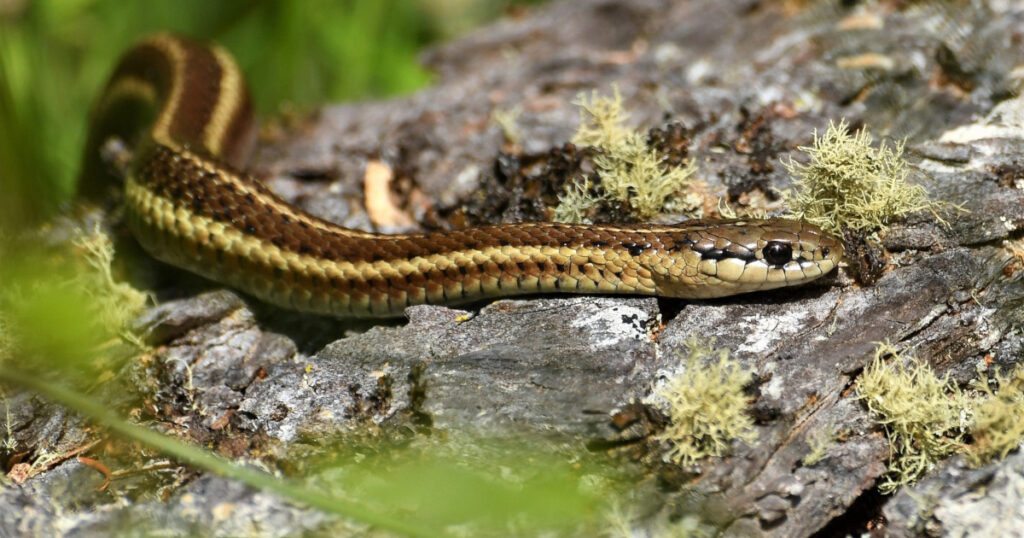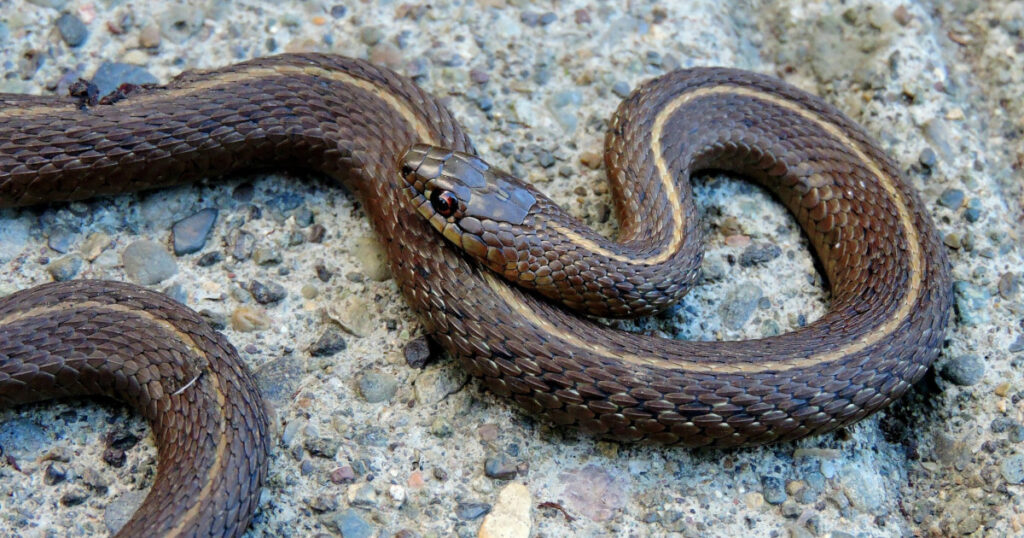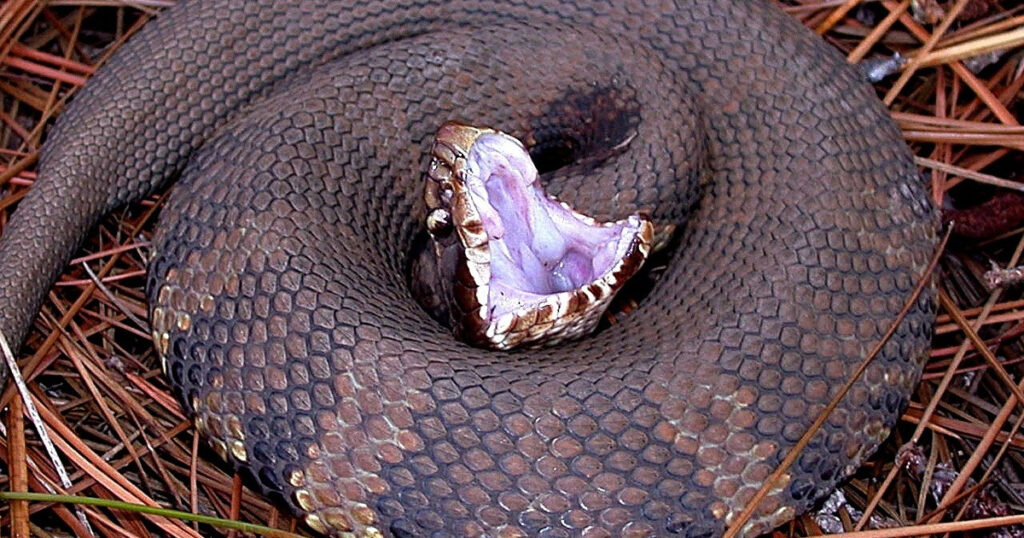Garter snakes are common snakes from the Thamnophis genus. They’re Colubridae snakes that live in North and Central America from the colder areas of Canada down to Costa Rica. Generally, there are 35 species and subspecies recognized, but there are some disagreements.
Most garter snakes have large round eyes, and round pupils, are slender, have keeled scales, and are typically heavily patterned. There are some species however that don’t have any stripes at all. Garter snakes can range in size from 18 inches to 51 inches.
In this article, we look more carefully at garter snakes.

Main Species of Garter Snakes
There are several species and subspecies of garter snakes. Here are some of the common species that you will come across.
San Francisco Garter Snake (Thamnophis sirtalis tetrataenia)
A subspecies of the Common Garter Snake (Thamnophis sirtalis), this species is often found in the wetland areas of the San Francisco peninsula. Their length can vary substantially with smaller specimens being just 18 inches long with some growing as long as 55 inches. They have keeled dorsal scales that are blue-green with a border of black, red, and blue-green stripes.
Texas Garter Snake (Thamnophis sirtalis annectens)
Primarily found in central Texas, there are other populations thought to be in two other states. Most people can confuse Texas Garter snakes with others, as it is very similar. The distinction between this and other species is the bright orange or red stripe down the center and the yellowish stripes on either side of the body.
Western Terrestrial Garter Snake (Thamnophis elegans)
This species is a very widely distributed species. Most are found in British Columbia, Alberta, and southwestern Manitoba. However, there are also populations on the western side of the US and isolated populations in Mexico.
Eastern Garter Snake (Thamnophis sirtalis sirtalis)
The eastern garter snake is a smaller species ranging in size between 18 inches and 26 inches. Females are typically larger than male specimens. Most are green, brown, or black and all have a yellow or white stripe.
Checkered Garter Snake (Thamnophis marcianus)
The checkered garter snake usually is green with a black checkerboard pattern down the back, which gives the species its name. Usually, this is a smaller species growing to just 24 inches, though individuals in their range are 42 inches. Typically, these species live in deserts and grasslands.
Plains Garter Snake (Thamnophis radix)
This garter snake has an orange or yellow stripe down its back with distinctive black bars on the lip. The belly is gray-green with small spots on the edges. There is a broad range of snakes, from central Alberta to Mexico. It typically prefers meadows, where it can find its prey in nearby marshes, streams, and ponds.
Red Sided Garter Snake (Thamnophis sirtalis infernalis)
Another subspecies of the common garter snake, this subspecies has an orange or red head. The appearance, however, can significantly vary depending on the geographical location.
Brown Garter Snake
Many people talk about a brown garter snake, but this is not a recognized species of garter snake. Instead, this could be any other species but is normally the common garter snake. A brown color could be because the garter snake is in shed and looks duller or because it is a less vibrant individual.
What Does a Garter Snake Look Like?

A garter snake is a group of different species, all with a lot of variances between them. Therefore, if you’re faced with a snake and you think that it might be a garter snake, it might be best to look at a picture of garter snake identifications to determine which one you’re facing. For the garter snake size, they are also varied, even within the same species or subspecies.
However, if you’re wondering how big a garter snake can get, then you might be interested that it can get up to four feet. However, most are usually between two and three feet.
What is the Garter Snake Lifespan?
For a snake species, garter snakes aren’t long-lived. Most garter snakes live for just about 10 years. In comparison, corn snakes (Pantherophis guttatus) can live for about 15-20 years. Yet the two species are relatively the same build and size, though garters tend to be slimmer.
Can a Garter Snake Bite?
The garter snake can bite, however, they are very reluctant to bite most of the time. Snakes are often unwilling to bite anything that they won’t eat. Even if they do bite, garter snake teeth are not going to cause much damage to your skin.
Is a Garter Snake Poisonous?

Poisonous is the wrong term to use when talking about snakes. Instead, you should use the word venomous. There are different opinions on whether the garter snake is venomous or not. Some scientists believe it is venomous, but the garter snake venom is so weak that it has little to no effect on humans.
Others believe it is not venomous. And in fact, so many people keep these as pets, that it would have been known if this was the case. A garter snake is more likely to musk on you anyway if you were to hold it.
How to Keep Garter Snakes Away
For many people, keeping garter snakes away from their yard or property is the most important thing. They have no interest in snakes. However, it is important to note that snakes are a vital part of our ecosystems.
Keeping garters away is more challenging than other snakes because of their diet. Their diet consists of slugs, worms, and smaller insects. Which are hard to keep out of yards or homes. So instead, concentrate on using devices like Envirobug which simulates large predators without affecting people or pets. Garter snakes will then avoid these areas, even if the prey is in the area.
Final Word: Garter Snakes in your Yard
Out of all the snakes you’re likely to come across, the garter snake is probably the most likely. However, generally speaking, there is no risk in coming into contact with them. They’re a lovely species that are important for keeping bug populations down in the local area. But there are also clean, eco-friendly ways to keep them out of your yard if you wish.